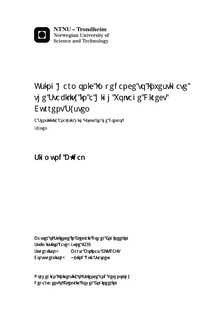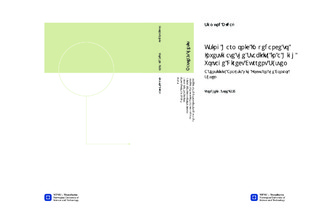| dc.description.abstract | In this report, a method for determining the stability in a High Voltage Direct Current (HVDC) system by using harmonic impedance is explained and applied. This method turns out to be a powerful tool for performing sensitivity analysis of the control system, but applications for other parts of the power system should not be excluded. A model of a HVDC link has been developed in MATLAB/Simulink, which constitutes the basis for simulations. As the HVDC model is based on Modular Multilevel Converters (MMC), the latest generation of converter technology, the control system is quite complex and sophisticated.The chosen approach has been to determine the stability by investigating satisfaction of the Nyquist stability criterion. The HVDC system was then partitioned into a source and load subsystem, each represented as a harmonic impedance. Frequency response analysis was applied to obtain the harmonic impedance of the two subsystems.The frequency response analysis involves two slightly different methods; current injection for the source subsystem and voltage injection for the load subsystem. The current injection method proved to be very sensitive for changes in simulation parameters and regulator settings at frequencies up to 100 Hz, and the accuracy in this frequency range is uncertain. On the other hand, the voltage injection method was found to be almost immune to any parameter value changes, as the harmonic impedance ended up as the same for all simulations.The impedance magnitude for both subsystems was found to be the same at frequencies above 100 Hz. As both subsystems are identical, except from the control systems in the converters, this means that the two methods for frequency response analysis are accurate at high frequencies. It also means that the converters? influence on the harmonic impedance, and therefore also the stability, are less significant above this frequency.From the sensitivity analysis, it has been discovered that the initial state of the system is actually vulnerable, as the curve in the Nyquist plot approaches the instability point at high frequencies. This means that instability is likely to occur if perturbations at the correct frequencies are present. The sensitivity analysis for the rectifier shows that the initial tuning of the control system is actually the most stable of the ones that are simulated. By changing the regulator parameter values in any direction, the Nyquist plots indicates increased probability for instability to occur. For the inverter, which proved to be almost immune to changes in the regulator parameter values, no changes concerning instability were observed during the sensitivity analysis.As many values close to the instability point in the Nyquist plot represents frequencies that exceeds the frequency range where the converters are significant, the power system itself must be redesigned to guarantee stable operating conditions. | nb_NO |

